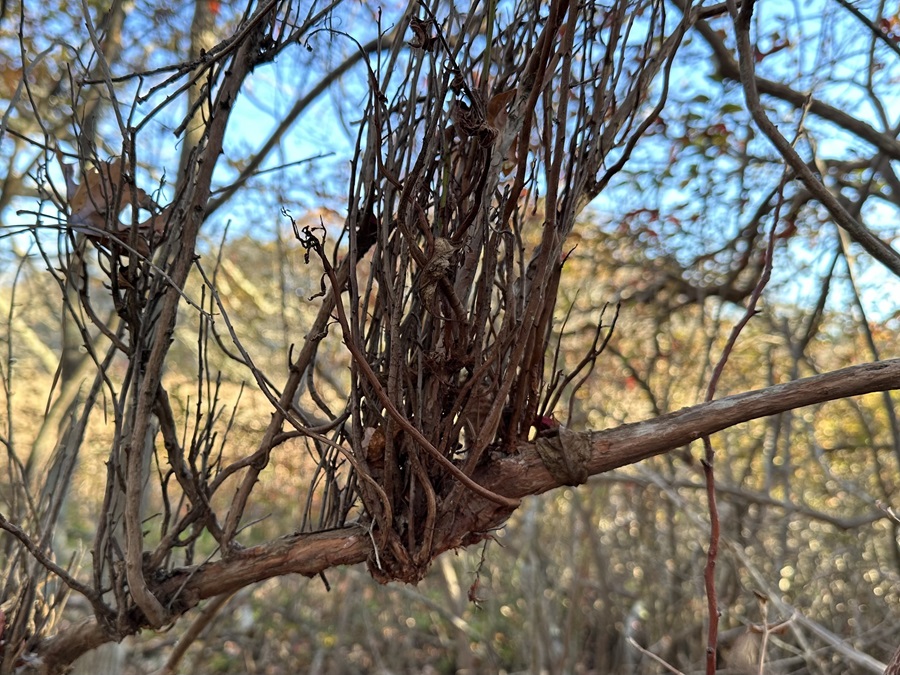
When certain shrubs are in the vicinity of fir trees, they can become infected with Pucciniastrum goeppertianum, a rust fungus that needs two different species to complete its life cycle. On a fir tree, an infected needle will turn yellow and produce tiny white fruiting bodies on its underside, looking disconcertingly like a used Bioré strip. The spores then travel on the wind to seek out host plants in the Vaccinium family — like the pictured highbush blueberry, V. corymbosum. Here the parasite causes hormonal dysregulation; an infected plant will produce limbs from the same point over and over and over, resulting in the disfiguration known as witch’s broom.
